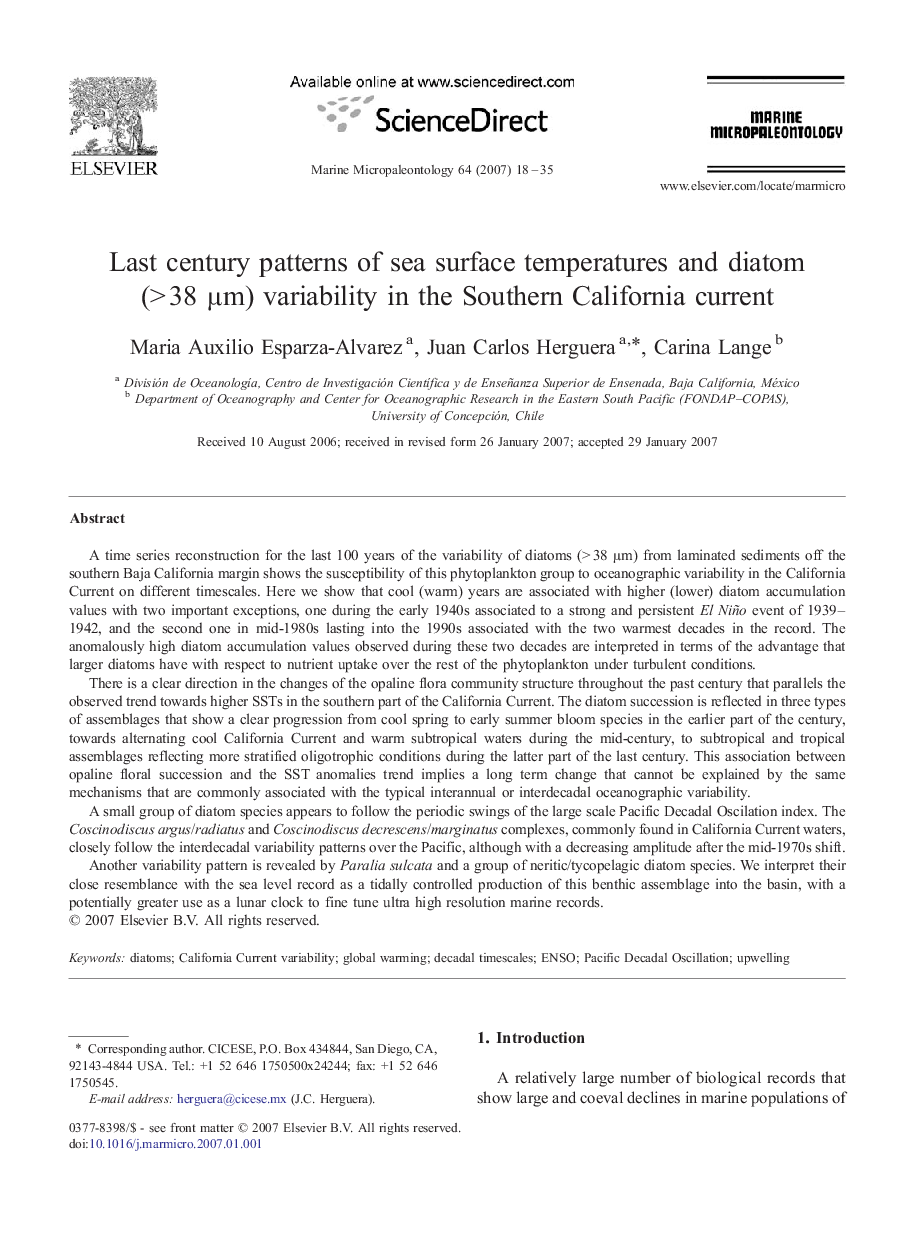| کد مقاله | کد نشریه | سال انتشار | مقاله انگلیسی | نسخه تمام متن |
|---|---|---|---|---|
| 4749359 | 1642228 | 2007 | 18 صفحه PDF | دانلود رایگان |

A time series reconstruction for the last 100 years of the variability of diatoms (> 38 μm) from laminated sediments off the southern Baja California margin shows the susceptibility of this phytoplankton group to oceanographic variability in the California Current on different timescales. Here we show that cool (warm) years are associated with higher (lower) diatom accumulation values with two important exceptions, one during the early 1940s associated to a strong and persistent El Niño event of 1939–1942, and the second one in mid-1980s lasting into the 1990s associated with the two warmest decades in the record. The anomalously high diatom accumulation values observed during these two decades are interpreted in terms of the advantage that larger diatoms have with respect to nutrient uptake over the rest of the phytoplankton under turbulent conditions.There is a clear direction in the changes of the opaline flora community structure throughout the past century that parallels the observed trend towards higher SSTs in the southern part of the California Current. The diatom succession is reflected in three types of assemblages that show a clear progression from cool spring to early summer bloom species in the earlier part of the century, towards alternating cool California Current and warm subtropical waters during the mid-century, to subtropical and tropical assemblages reflecting more stratified oligotrophic conditions during the latter part of the last century. This association between opaline floral succession and the SST anomalies trend implies a long term change that cannot be explained by the same mechanisms that are commonly associated with the typical interannual or interdecadal oceanographic variability.A small group of diatom species appears to follow the periodic swings of the large scale Pacific Decadal Oscilation index. The Coscinodiscus argus/radiatus and Coscinodiscus decrescens/marginatus complexes, commonly found in California Current waters, closely follow the interdecadal variability patterns over the Pacific, although with a decreasing amplitude after the mid-1970s shift.Another variability pattern is revealed by Paralia sulcata and a group of neritic/tycopelagic diatom species. We interpret their close resemblance with the sea level record as a tidally controlled production of this benthic assemblage into the basin, with a potentially greater use as a lunar clock to fine tune ultra high resolution marine records.
Journal: Marine Micropaleontology - Volume 64, Issues 1–2, 25 June 2007, Pages 18–35